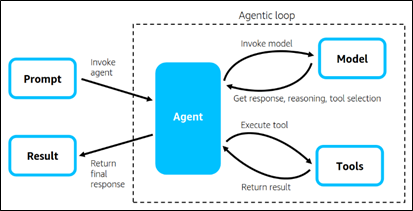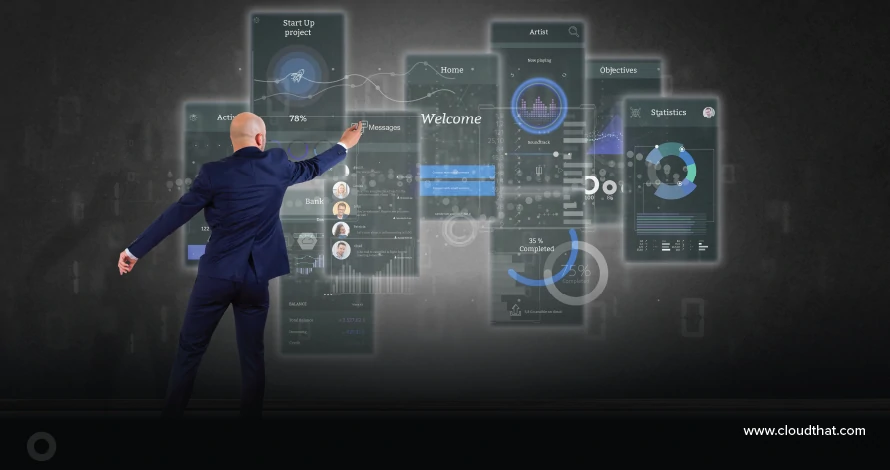|
Voiced by Amazon Polly |
In an era where AI agents are no longer just chatbots but autonomous workflows, frameworks like Strands Agents are changing the game. Built by Amazon Web Services (AWS), this open-source SDK lets both developers and business teams create model-driven agents that reason, decide and act using tools and language models. In this blog, we’ll cover what it is, how to use it practically and why it matters from a business perspective.
Customized Cloud Solutions to Drive your Business Success
- Cloud Migration
- Devops
- AIML & IoT
What are Strands Agents?
Strands Agents is an SDK that shifts the paradigm from hand-coded workflows to letting the model handle orchestration. You define: the model/provider, the prompt (agent’s role) and the tools the agent can use. Then the agent enters a loop: think → pick tool → act → reflect.
Key features:
- Model-agnostic: Works with AWS Bedrock, Anthropic, OpenAI and local models.
- Tool integration: Define custom tools (APIs, code functions) for agents to invoke.
- Multi-agent and orchestration support: Handoffs, swarms, agent networks.
- Production readiness: Traceability, observability, state/session management.
Practical Setup: How to Get Started
An agent interacts with its model and tools until it completes the task provided by the prompt, as shown in the figure below.

Source: AWS Open Source Blog
Here’s a step-by-step, practical path to build your first agent with Strands:
- Install the SDK: pip install strands-agents
- Define your model provider and prompt
from strands import Agent
agent = Agent() # default model & provider
result = agent (“What is the square root of 1764?”)
print(result)
This simple example shows the model reasoning and returning the answer.
- Add a tool:
Suppose you want your agent to perform calculations. You can wrap a Python function and register it as a tool. Then the agent can “decide” to call the tool, get the result and integrate it into its answer. - Deploy & monitor:
- For production, use AWS services (Lambda, EKS, EC2) or other cloud/on-premises.
- Enable session/state management so agents remember context across turns or tasks.
- Use observability (Open Telemetry) to trace calls, tool usage, and model decisions.
- Multi-Agent scenario:
For more complex workflows, you can have a “main” agent that delegates to specialist agents- e.g., a research agent, an analysis agent, a writer agent. Strands support swarms, graph workflows, and A2A (agent-to-agent) communication.
Use-Cases: Business Meets Dev
Here are scenarios combining business value and developer execution:
- Customer support automation: Use an agent to triage a support ticket, call a knowledge-base tool and initiate an API call to create a case in your CRM. The developer builds the tool integrations; the business sees reduced response times and consistent service.
- Market-intelligence research: An agent uses web-scraping and summarization tools to pull competitor product data, analyse pricing trends and generate a briefing for sales. Practical coding: define search/extract tools; business gain: timely insights.
- Workflow orchestration in enterprise: Suppose HR gets questions about policy. One agent handles FAQs, another integrates with internal systems (leave balances, payroll). With Strands, you can treat these as coordinated agents rather than a monolithic script.
Best Practices & Pitfalls
- Prompt design is still key: Even though the model handles orchestration, your prompt sets the tone, role and constraints of the agent.
- Balance tool granularity: If tools are too fine-grained, you’ll get agent chatter; if too coarse, you lose flexibility.
- Observability matters for trust: In enterprise settings, you must track how agents make decisions, which tool they used and why.
- Mind costs & performance: Model calls, tool calls, streaming- they all have cost and latency implications. Start small in dev.
- Security & governance: Agents acting on tools or APIs should have scoped access. Define tool permissions, sanitize data.
- Start simple, expand to multi-agent only when needed: A single well-defined agent is easier to manage. Scale to a swarm when tasks grow in complexity.
Why This Matters Now
The keyword “multi-agent orchestration” is gaining search interest as enterprises look beyond static chatbots to dynamic workflows. Strands aligns with this trend by providing teams with a model-driven agent framework that balances developer ease and enterprise robustness. This means fewer bespoke scripts, more reuse and faster iterations. By reducing orchestration overhead, business teams can launch intelligent workflows faster, and developers spend less time on plumbing and more on value-adding logic.
Companies such as CloudThat can help train teams, reducing the learning curve, avoiding common pitfalls in agent development and enabling the faster and more confident deployment of your Strands-based solution. Courses on AWS Agentic AI, along with support for end-to-end implementation, help bridge the skill and execution gap for real-world use cases.
Building the Next Generation of AI Agents with Strands
Whether you’re a developer looking for a lean, flexible way to build agents, or a product/business leader chasing automation and intelligent workflows, Strands Agents offers the best of both worlds: practical code-first ease and enterprise-grade power. Focus on your prompt, define the tools that matter, monitor your agents and you’ll be able to move from prototype to production more smoothly than with traditional frameworks.
Get your new hires billable within 1-60 days. Experience our Capability Development Framework today.
- Cloud Training
- Customized Training
- Experiential Learning
About CloudThat
CloudThat is an award-winning company and the first in India to offer cloud training and consulting services worldwide. As a Microsoft Solutions Partner, AWS Advanced Tier Training Partner, and Google Cloud Platform Partner, CloudThat has empowered over 850,000 professionals through 600+ cloud certifications winning global recognition for its training excellence including 20 MCT Trainers in Microsoft’s Global Top 100 and an impressive 12 awards in the last 8 years. CloudThat specializes in Cloud Migration, Data Platforms, DevOps, IoT, and cutting-edge technologies like Gen AI & AI/ML. It has delivered over 500 consulting projects for 250+ organizations in 30+ countries as it continues to empower professionals and enterprises to thrive in the digital-first world.

WRITTEN BY Swati Mathur
Swati Mathur is a Subject Matter Expert at CloudThat, specializing in Cloud Computing and ML\GenAI. With more than 15 years of experience in IT Training and consulting, she has trained over 1000+ professionals and students to upskill in multiple technologies. Known for simplifying complex concepts and delivering interactive, hands-on sessions, she brings deep technical knowledge and practical application into every learning experience. Swati's passion for public speaking and continuous learning reflects in her unique approach to learning and development.


 Login
Login


 November 19, 2025
November 19, 2025 PREV
PREV










Comments